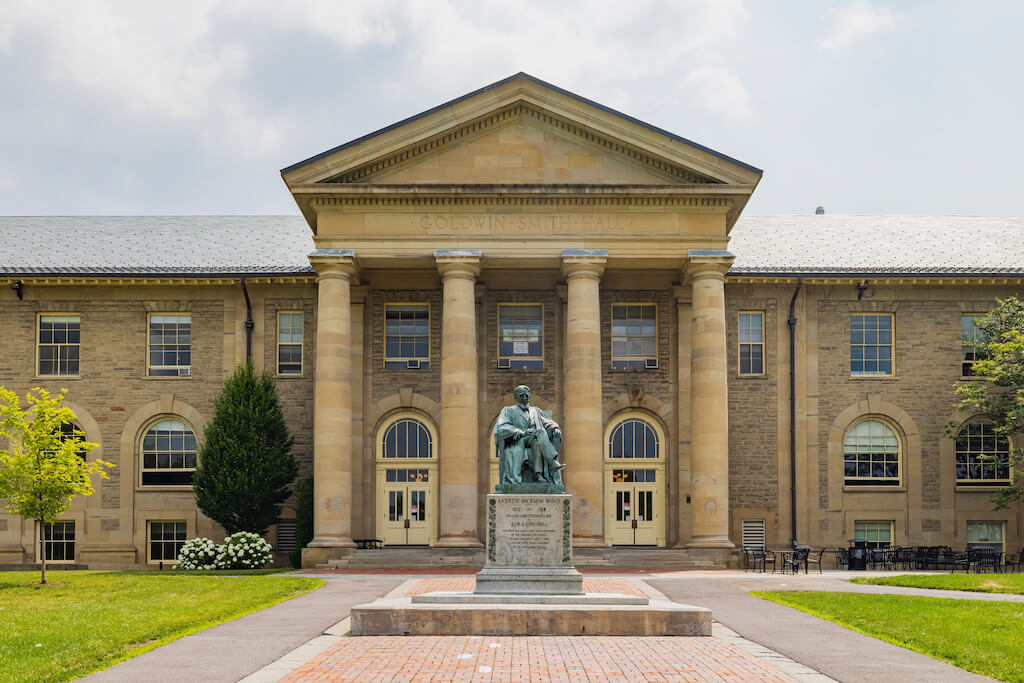I have heard for years that physicians borrow a lot of money to attend medical school. I have also heard that high debt levels are okay because medical doctors make enough money to repay their student loans. Based on the data reported by the Wall Street Journal, I’m not so sure.
I reviewed the med school data similarly to my law school review by looking at the chart displaying the ratios of debt to earnings for all medical schools.
A quick glance indicates that there are only three medical schools with a ratio of median debt to median earnings of less than 1.0. That’s five less than the eight law schools with less than 1.0 ratios.
The three medical programs with ratios less than 1.0 are Harvard University, Stanford University, and Columbia University. Unlike the law schools that I analyzed and reviewed in an earlier article, the reason all three of these institutions are below 1.0 is because their median debt is less than the median earnings. Without data available indicating the percentage of students who borrow, I am unable to determine if the lower debt is due to a higher percentage of wealthier students attending or lower tuition.
One notable difference between the medical school graduates and law school graduates is the narrow band of earnings. This is most likely due to the Department of Education’s data standard that looks at median earnings of graduates two years after graduation.
In the case of medical schools, nearly all graduates are employed in a residency program two years after graduation. The narrow band of earnings most likely explains the similarity. Depending on the medical specialty selected, I would expect this to differ, maybe substantially, if measured 10 years after graduation instead of two years later.
Whether or not the earnings data is reasonable given graduates’ employment in residency programs two years after graduation doesn’t preclude the importance of examining the level of debt incurred by graduates of medical schools. The average of the median debt for all the institutions listed by the WSJ is $166,314. This is the highest debt level for any of the graduate degrees.
According to the Department of Education, approximately 81% of 2015-16 medical school graduates incurred loans for their education. The average loan balance for medical school graduates from the same year was $246,000, which is a considerably different number than the average of the median points reported in the chart.
A potential reason for the difference between median debt balance and average debt balance is that the College Scoreboard dataset appears to be missing data from 64 medical schools. I noticed a discrepancy with law schools and provided a list in a previous article. The list of medical schools that I believe are not included in the College Scorecard dataset are:
- Albert Einstein
- California Northstate University College of Medicine
- California University of Science and Medicine
- Central Michigan University
- Charles R. Drew University of Medicine and Science
- CUNY – New York
- Duke University School of Medicine
- Florida Atlantic University
- Geisinger Commonwealth School of Medicine
- Hackensack Meridian School of Medicine
- Indiana University – Evansville
- Johns Hopkins University
- Kaiser Permanente School of Medicine
- Medical University of South Carolina
- Meharry Medical College
- Mercer University
- Michigan State University
- New York University
- Northeast Ohio Medical University
- Nova Southeastern University
- Penn State University – Hershey College of Medicine
- Ponce School of Medicine – Puerto Rico
- Quinnipiac University
- Rosalind Franklin University of Medicine and Science
- Rowan University
- Rutgers University – Newark
- San Juan Bautista School of Medicine – Puerto Rico
- SUNY – Brooklyn
- SUNY – Syracuse
- Temple University
- Texas Christian University and UNTHSC School of Medicine
- Texas Tech University – El Paso
- Texas Tech University – Lubbock/Amarillo
- The University of Texas – Rio Grande
- Uniformed Services University of the Health Sciences
- Universidad Central del Caribe – Puerto Rico
- University of Alabama
- University of South Alabama
- University of Arizona – Phoenix
- University of Buffalo
- University of California – Riverside
- University of Cincinnati
- University of Central Florida
- University of South Florida
- University of Houston
- University of Illinois – Urbana Champaign
- University of Massachusetts
- University of Mississippi
- University of Nevada – Las Vegas
- University of New Mexico
- University of North Dakota
- University of Oklahoma – Tulsa
- University of Rochester
- University of South Carolina – Greenville
- University of Tennessee
- University of Texas – Austin
- Virginia Tech School of Medicine
- Washington State University
- Western Michigan University
- Wright State University
- Yale School of Medicine
Some schools of medicine may not be listed in the College Scorecard dataset because they are relatively new. However, most of these schools (e.g., Duke, Johns Hopkins, and Yale) have been in existence long enough to be included.
I don’t know if the other schools have data issues like what I identified in my previous article. I also note that the term medicine could include schools preparing doctors of osteopathy. I did not list any of those schools (approximately 35) to avoid potentially misclassifying them.
The practice of medicine goes back thousands of years. Medical schools have existed less than 150 years, and they are the gatekeepers for licensing in all 50 states. Educating physicians is not an inexpensive process.
At the same time, I am concerned about the median debt level for medical doctors as presented by the College Scorecard. The high level of debt is one explanation why more graduates choose specialties rather than internal medicine.
Public universities charge lower tuition for bachelor’s and master’s degrees, and this lower tuition usually means that graduates incur lower levels of debt for their education. It’s surprising that the three institutions with a debt to earnings ratio less than one were elite, private institutions.
The College Scorecard was developed to provide consumers with easy-to-comprehend information about institutions that they were considering. The recent addition of median debt and median earnings for graduate programs is a huge plus. At the same time, the low acceptance rate of medical school applicants (less than 15%) is due to a high demand on the few slots available each year.
It’s my belief that public institutions should not saddle graduates of any programs with high levels of student loan debt. Given our need for more, not fewer, medical doctors, these debt levels are outrageous.
I hope that the availability of this data stimulates discussion by state and federal policymakers. I also hope that the Department of Education fixes some of the issues that keep many universities from being included.












